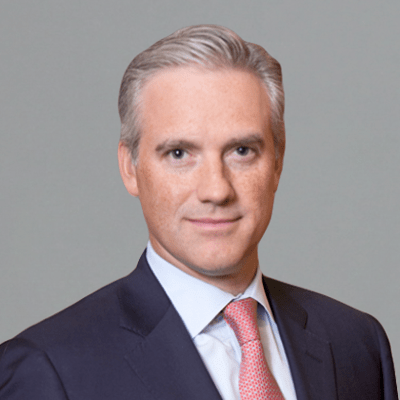Today’s geopolitical climate, exacerbated by continued supply chain issues, inflation, and rising interest rates, has created a volatile market. We believe a laddered portfolio can still provide value to both municipal and corporate bond investors.
The first half of 2022 will be remembered for a rapid surge in consumer prices, a sharp increase in rates, and a dramatic pivot by the Fed to an active inflation-fighting stance. The steep rise in the year-over-year consumer price index (CPI) from an already high 5% to over 8% has disproved the notion that any postpandemic inflation would be transient.
A surprising resurgence in geopolitical risk—with Russia invading Ukraine and China intensifying rhetoric around Taiwan—has exacerbated market concern. War-related increases in energy, industrial commodities, and food prices have increased pressure on consumers and further disrupted supply chains. Notably, the national average of gasoline prices exceeded $5 per gallon for the first time in US history. Couple this with sharp increases in food prices, and consumer finances have deteriorated markedly, resulting in the University of Michigan Consumer Sentiment Survey hitting a historic low in May.
Not surprisingly, economic data shows clear signs of deterioration. First-quarter GDP unexpectedly printed negative, and early projections like the Atlanta Fed’s GDPNow suggest second-quarter GDP may also be negative. If that’s the case, the economy may already meet the technical definition of a recession. In June, 10-year Treasury rates dropped below two-year rates, inverting the yield curve. Inversions of this sort have been a reliable precursor of recessions in the past.
Despite economic deterioration, the rapid rise in inflation to a 40-year high is causing the Fed to react forcefully. It’s possible that massive amounts of liquidity injected to support the economy during the pandemic has cost them the luxury of gradually normalizing rates. Three consecutive greater federal funds target rate increases of 0.25%, 0.50%, and 0.75% underscore how determined the Fed is to get in front of the problem. The 0.75% increase at the Fed’s June meeting was the largest since 1994. June also saw the Fed begin the runoff of securities from its balance sheet, a process known as quantitative tightening (QT). While this should help tighten financial conditions, market participants have limited experience with QT, which could contribute to elevated volatility and increased risk premiums.
Over the second half of the year, markets and interest rates will be extremely sensitive to progress on inflation. The Fed is aiming to engineer a soft landing, but given the complex dynamics, a gradual glide path will be difficult to achieve. On one hand, the economy appears to be slowing, which should constrain demand, decrease pricing pressures, and therefore reduce interest rates. But on the other, energy and food prices—two of the largest drivers of inflation—have global demand and may fall outside the Fed’s control. The odds of stagflation, in which inflation is consistently higher than economic growth, are higher than at any time since the 1970s.
There are positives, however, and we’re unlikely to see a repeat of the 1970s. Employment remains strong, wage growth is good, and consumers still have substantial gains in housing and investment portfolios. In addition, there’s reason for optimism that the worst of the pandemic is over and supply chains will continue to untangle. If a recession does unfold, particularly if it severely disrupts credit conditions, the Fed has the tools and flexibility to implement decisive, significant measures to restore investor and consumer confidence.
Meanwhile, municipal and corporate returns are suffering through the worst bond market since 1842. While most of the decline to date has resulted from rising rates, IG corporate spreads and municipal ratios have also widened modestly. Granted, there have been brief periods of recovery, like in May, when rates moved lower for a period, but assessing the environment as anything short of challenging would be difficult.
Simple, scalable fixed income solutions
Against this challenging backdrop, municipal and investment-grade (IG) corporate bond yields reached compelling levels as the combination of rising rates and widening spreads created sharply higher all-in yields. In response to the pandemic, management teams have become extremely conservative. Consequently, IG companies are entering the slowdown with very strong balance sheets. They’re generating strong cash flows, and leverage is at respectable levels. Because those companies took full advantage of the ultralow rate environment to issue, they’re somewhat insulated from having to issue at higher rates. This can be seen in the interest coverage ratio—the ratio of a company’s earnings before interest, taxes, depreciation, and amortization to its interest expense—which has never been higher. Because so much refinancing has occurred, we expect decreased issuance in the near term, another positive for spreads.
In the meantime, the steep rise in Treasury rates, coupled with modest spread widening, has created compelling value. The 4.5% all-in yield for the intermediate ICE BofA 1–10 Year US Corporate Index exceeds that available during the March 2020 pandemic selloff and is at the average since the ICE began publishing data in 1994. Viewed within the context of a ladder investment, the current yield is even more attractive. The yield on an A-rated one- to five-year ladder with a 2.9-year duration now exceeds 3.7%. This is higher than the 20-year index average of 2.8% and seven times higher than the 0.5% yield available on the same ladder in January 2021. Importantly, the starting yield offers sufficient cushion that an A-rated one- to five-year ladder could withstand a 2.25% increase in rates and still produce a breakeven return over the next year. The same ladder would produce a five-year cumulative return of 24.7%, which would increase to 30.7% if rates jump by 2.25% over the coming year.
What we see in munis
From a credit perspective, most municipalities are in significantly better shape than they were heading into the last recession. Most have benefited from strong tax receipts or revenues as well as generous federal assistance. Property values have increased, and before this year strong equity returns have contributed to improved pension funding ratios. In addition, municipalities generally have operated conservatively throughout the pandemic, building up reserves and rainy-day funds.
Muni ratios outside the curve are attractive, while those inside of five years are indicative of fair relative value. However, the increase in yields down the muni curve means today’s yields are more attractive than they’ve been in more than a decade. For a top-bracket payer, a one- to five-year A-rated muni ladder with a 2.6-year duration has a taxable equivalent yield over 4%.
The bottom line
While uncertainty surrounding the economy is high, we believe both municipal and IG corporate markets offer compelling value, particularly within the context of a laddered investment philosophy. Higher all-in yields offer a significant buffer against additional spread widening and Treasury market declines. The ability to reinvest maturities at higher yields and wider spreads will help investors weather even the worst market conditions. Our view is that investors should neither overreact nor sit on the sidelines paralyzed by the negative headlines.
The index data referenced herein is the property of ICE Data Indices, LLC, its affiliates, ("ICE") and/or its third-party suppliers. ICE, its affiliates, and third-party suppliers accept no liability in connection with its use.













